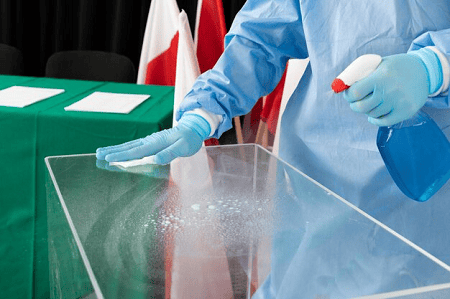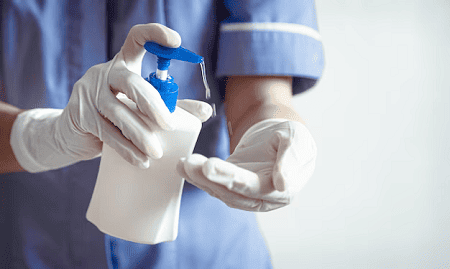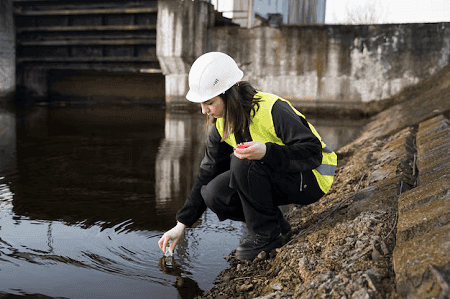Sterilization Plan and Cleaning Practices
Sterilization Plan and Cleaning Practices ? Understanding sterilization plans and cleaning practices is crucial, especially in healthcare and other settings where infection control is paramount. Here’s a breakdown of key concepts: Key Differences: Cleaning, Disinfection, and Sterilization Essential Components of a Sterilization Plan A comprehensive sterilization plan typically includes: Cleaning Practices Effective cleaning practices are fundamental to preventing the spread of infections. Key aspects include: Where these practices are important: By adhering to rigorous sterilization plans and cleaning practices, we can significantly reduce the risk of infections and create a safer environment. What is Sterilization Plan and Cleaning Practices ? When discussing “Sterilization Plans and Cleaning Practices,” it’s essential to understand that these are critical components of infection control, particularly within healthcare and other environments where minimizing the spread of microorganisms is vital. Here’s a breakdown: Understanding the Terms: Sterilization Plan: A comprehensive sterilization plan should include: Cleaning Practices: Effective cleaning practices are fundamental in preventing the spread of infection: Importance: These practices are vital in: In essence, a strong sterilization plan and diligent cleaning practices work together to create a safer environment by minimizing the risk of infection. Who is required Sterilization Plan and Cleaning Practices ? The need for sterilization plans and cleaning practices spans a wide range of sectors, but it’s particularly critical in environments where the risk of infection is high. Here’s a breakdown of who requires these practices: 1. Healthcare Settings: 2. Other Sectors: Key takeaway: Essentially, any environment where there’s a risk of transmitting infectious agents requires a well-defined sterilization plan and consistent cleaning practices. The level of stringency varies depending on the specific risks involved. When is required Sterilization Plan and Cleaning Practices ? Sterilization plans and cleaning practices are required consistently, but the level of stringency varies depending on the specific situation. Here’s a breakdown of when they’re particularly crucial: General Situations: Specific Scenarios: Key Considerations: In essence, sterilization plans and cleaning practices are not just for isolated incidents; they’re an integral part of maintaining a safe environment in various settings. COURTESY : Mallard Lane Dental Where is required Sterilization Plan and Cleaning Practices ? Sterilization plans and cleaning practices are essential in a wide variety of settings, but they are absolutely critical in environments where the risk of infection is high. Here’s a breakdown of the key locations: 1. Healthcare Settings: 2. Other Important Locations: Key Points: In essence, any location where there’s a potential for the spread of microorganisms requires some level of sterilization and cleaning practices. How is required Sterilization Plan and Cleaning Practices ? The “how” of required sterilization plans and cleaning practices involves a multi-faceted approach, emphasizing adherence to established guidelines and meticulous execution. Here’s a breakdown: 1. Establishing a Comprehensive Plan: 2. Implementing Effective Cleaning Practices: 3. Executing Proper Sterilization Procedures: Key Considerations: By following these steps, organizations can establish and maintain effective sterilization plans and cleaning practices, minimizing the risk of infection. Case study is Sterilization Plan and Cleaning Practices ? When examining sterilization plans and cleaning practices through a case study lens, it’s essential to recognize that these practices are fundamental to preventing healthcare-associated infections (HAIs). Therefore, many case studies revolve around analyzing outbreaks, identifying lapses in protocol, and implementing improvements. Here’s how we can approach this, and some general points that are often seen in these types of studies: Key Areas of Focus in Case Studies: General Points Often Found Within Case Studies: Where to Find Case Studies: By examining these case studies, healthcare professionals and other stakeholders can gain valuable insights into best practices for sterilization and cleaning, ultimately improving patient safety. COURTESY : Orthodontic Products White paper on Sterilization Plan and Cleaning Practices ? Creating a comprehensive white paper on sterilization plans and cleaning practices involves a thorough examination of current standards, best practices, and emerging technologies. Here’s a structured outline of key areas to include: I. Introduction: II. Fundamentals of Sterilization and Cleaning: III. Sterilization Practices: IV. Cleaning and Disinfection Practices: V. Emerging Technologies and Best Practices: VI. Conclusion: VII. References: By following this outline, you can create a valuable white paper that contributes to the advancement of sterilization and cleaning practices. Industrial application of Sterilization Plan and Cleaning Practices ? Sterilization plans and cleaning practices have vital industrial applications across numerous sectors. Here’s a breakdown of key areas: 1. Pharmaceutical Industry: 2. Food and Beverage Industry: 3. Medical Device Manufacturing: 4. Biotechnology Industry: 5. Cosmetics Industry: Key Industrial Considerations: In essence, industrial applications of sterilization and cleaning practices are fundamental to ensuring product safety, quality, and regulatory compliance across a wide range of sectors. Research and development of Sterilization Plan and Cleaning Practices ? The research and development (R&D) of sterilization plans and cleaning practices is a dynamic field, constantly evolving to address emerging challenges and improve safety. Here’s an overview of key areas of focus: 1. Development of Novel Sterilization Technologies: 2. Enhancement of Cleaning and Disinfection Practices: 3. Addressing Emerging Challenges: Key Drivers of R&D: By focusing on these areas, R&D efforts are contributing to the development of safer and more effective sterilization and cleaning practices. COURTESY : Pharma Best Practices Webinars References Recommended HashTags
Sterilization Plan and Cleaning Practices Read More »










